Tomb 86
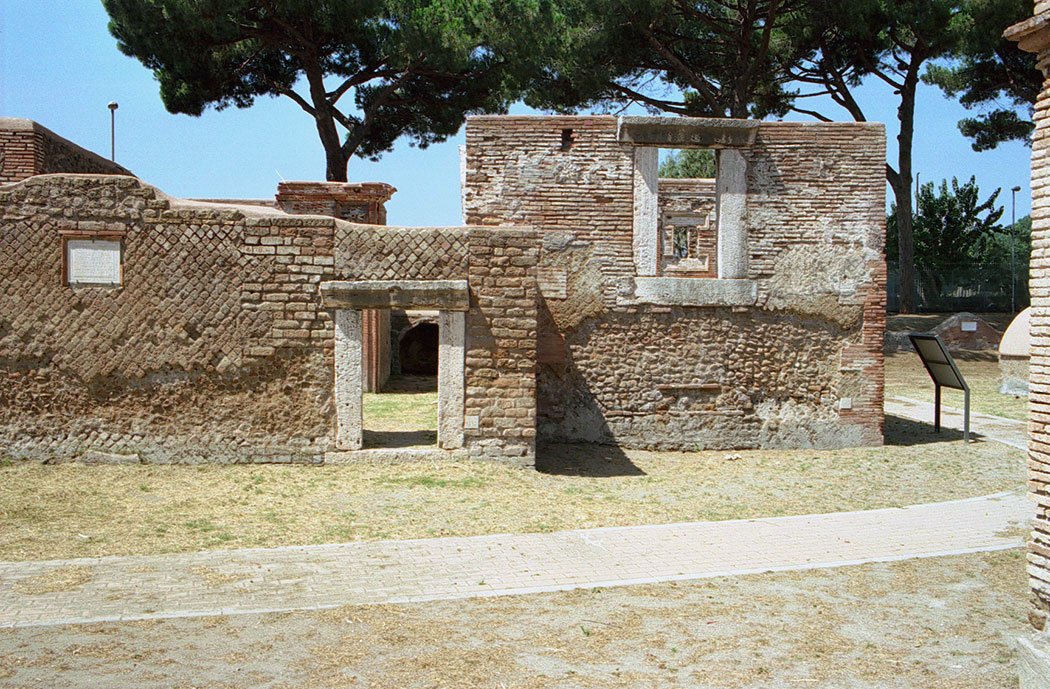
the new entrance of the enclosure of tomb 85 on the right side.
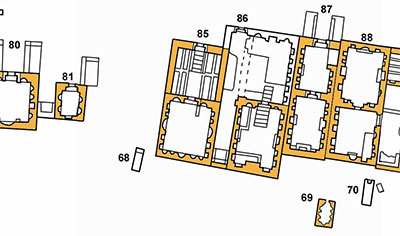 Originally detached, tomb 86 consisted of two burial chambers above each other. One of them is partly subterranean.
Originally detached, tomb 86 consisted of two burial chambers above each other. One of them is partly subterranean.
The grave was facing the Via Severiana. The upper burial chamber that could be reached by a staircase of four steps, had two small windows in the back wall to illuminate the room a little bit. On the outside corners are square brick columns with pumice rosettes of lotus flowers in top.
The entrance is located in the middle of the façade.
The upper burial chamber has been built for interring urns only and has large central niches flanked by small, semicircular niches. The floor, now disappeared, must have been covered by a black-and-white mosaic.
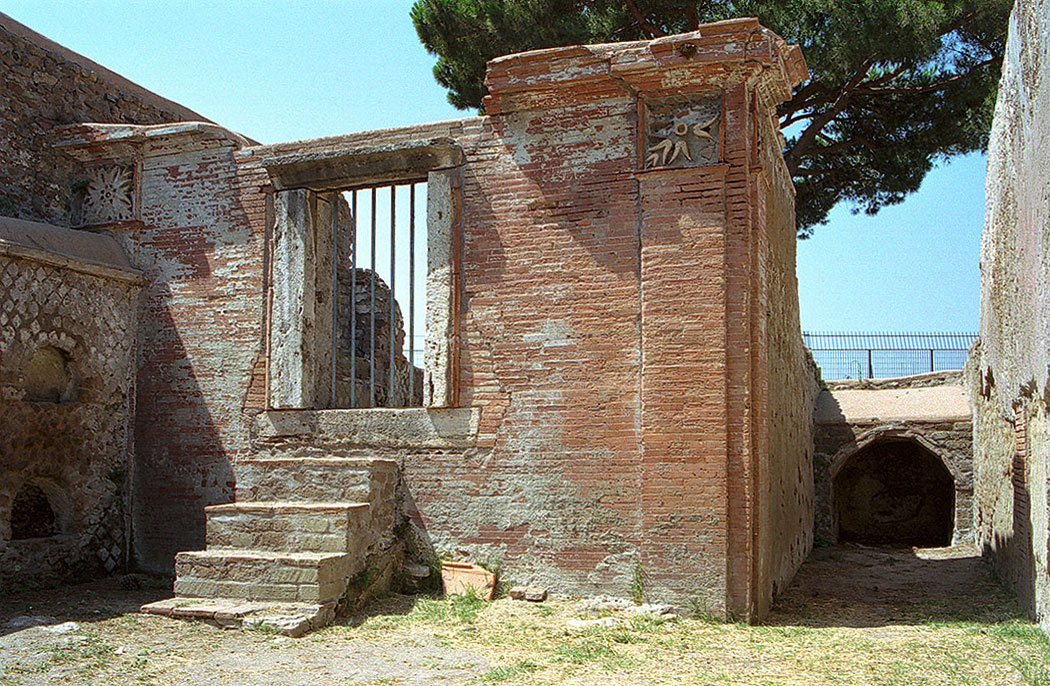
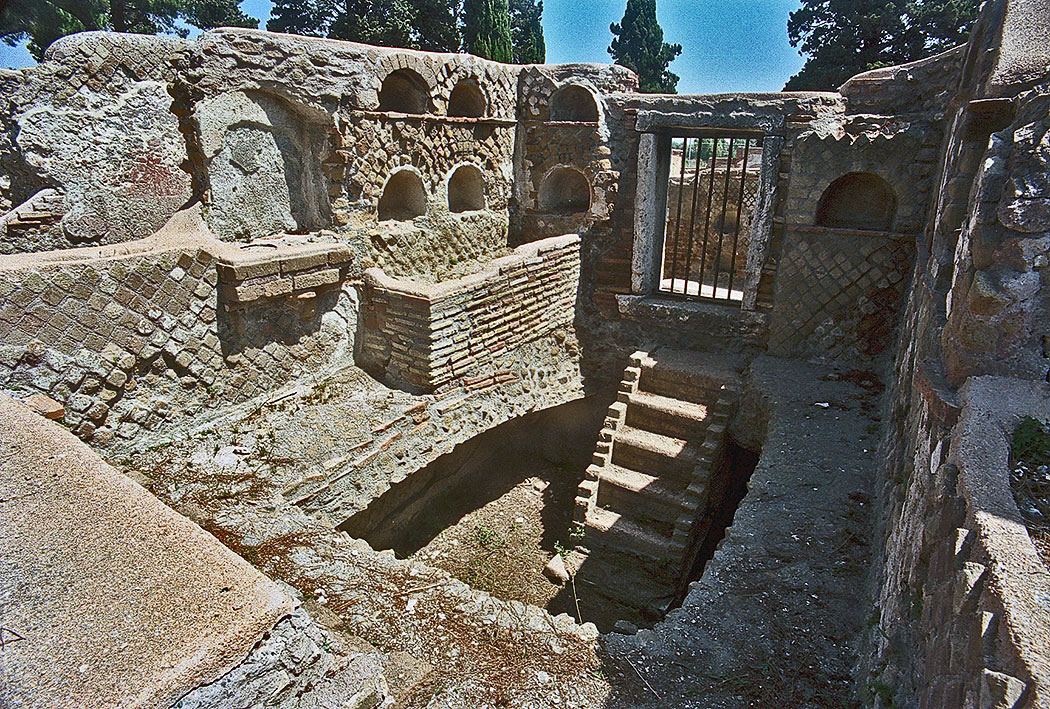
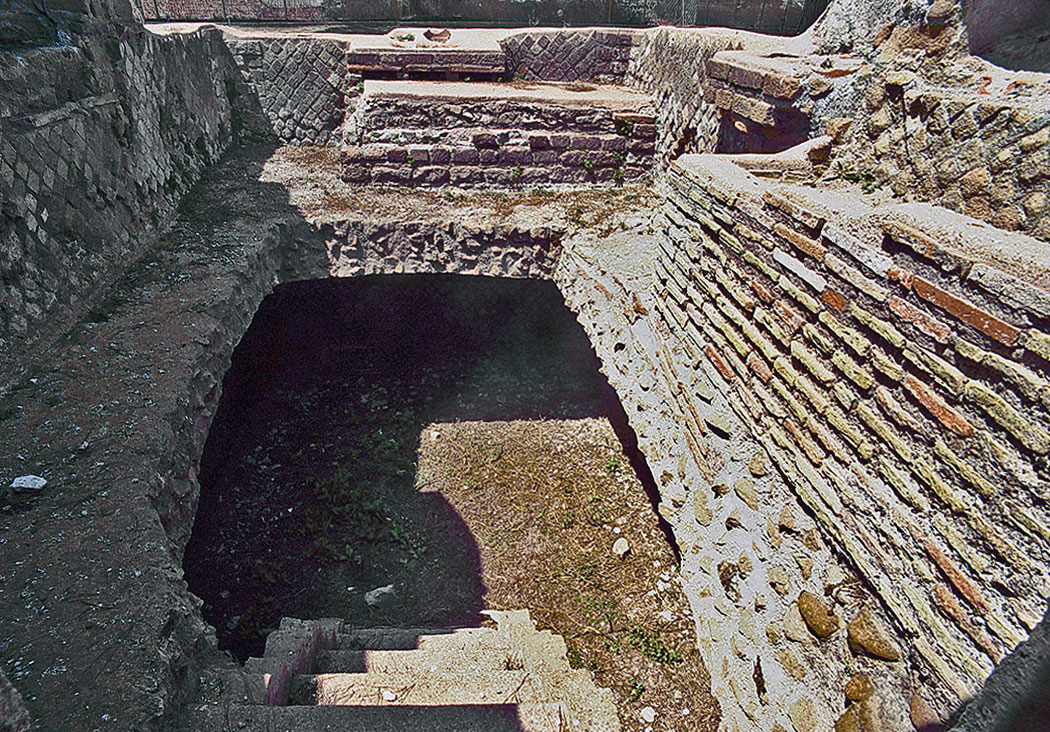
In spite of the mythological nature of the scene, the type of boat depicted is the same type of boat that fishermen used. The mosaic is now protected by plastic and earth.
Alongside the back and side walls of the lower burial chamber three sarcophagi have been found (stored in the Ostian museum).
A large platform at the back wall and one alongside the left wall show that inhumation in the upper chamber became common during a later use of that chamber
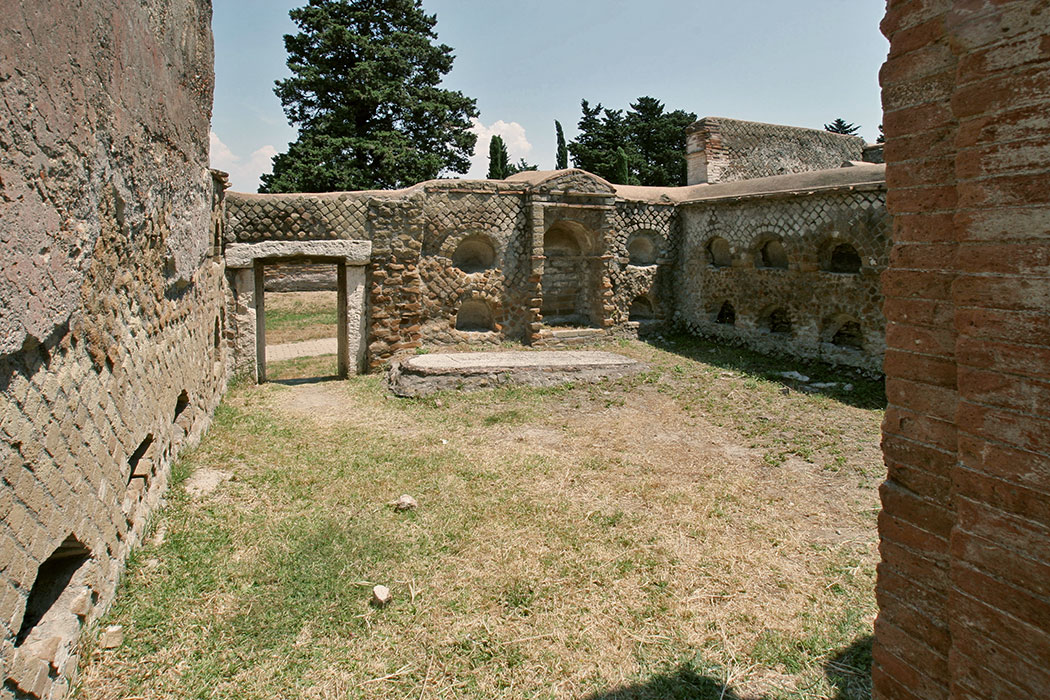
Right next to the entrance the platform with the coloured mosaic.
The walled-in courtyard was added later. It is shaped irregularly due to the enclosing of the space between tomb 85 and 86.
The corridor created on the right side of the burial chamber was equipped with a furnace. The left wall of the new enclosure became a double row of small, semicircular niches. The right one has two rows of two small niches. The original entrance of tomb 85 was also located in this wall.
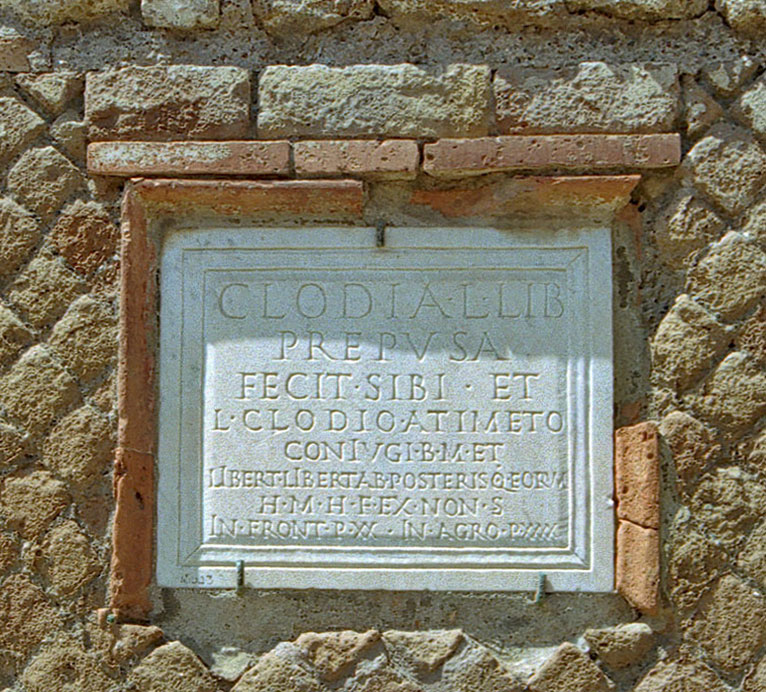
The façade of the enclosure lies in line with the enclosure of tomb 87, but protrudes a little bit with regard to tomb 85.
The entrance of tomb 86 is located on the right side of the façade, which has the following inscription:
CLODIA L(uci) LIB(erta)
PREPVSA
FECIT SIBI ET
L(ucio) CLODIO ATIMETO
CONIVGI B(ene) M(erenti) ET
LIBERT(is) LIBERTAB(usque) POSTERISQ(ue) EORVM
H(oc) M(onumentum) H(eredem) F(amiliae) EX(terum) NON S(equetur)
IN FRONT(e) P(edes) XX IN AGRO P(edes) XXXX
Clodia Prepusa, freedwoman of Lucius, has built this monument for herself and for Lucius Clodius Atimetus, her well-deserving husband, and for her freed slaves, and the descendants. The tomb could not be inheritated by those who did not belong to the family. The area measures 20 feet in width and 40 feet in depth.
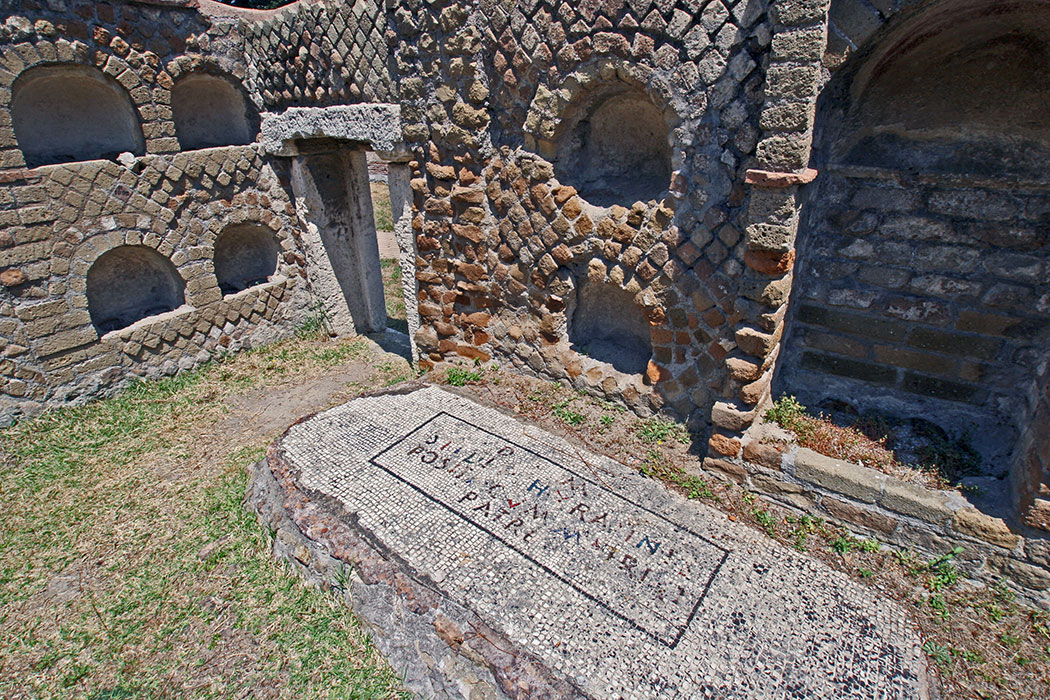
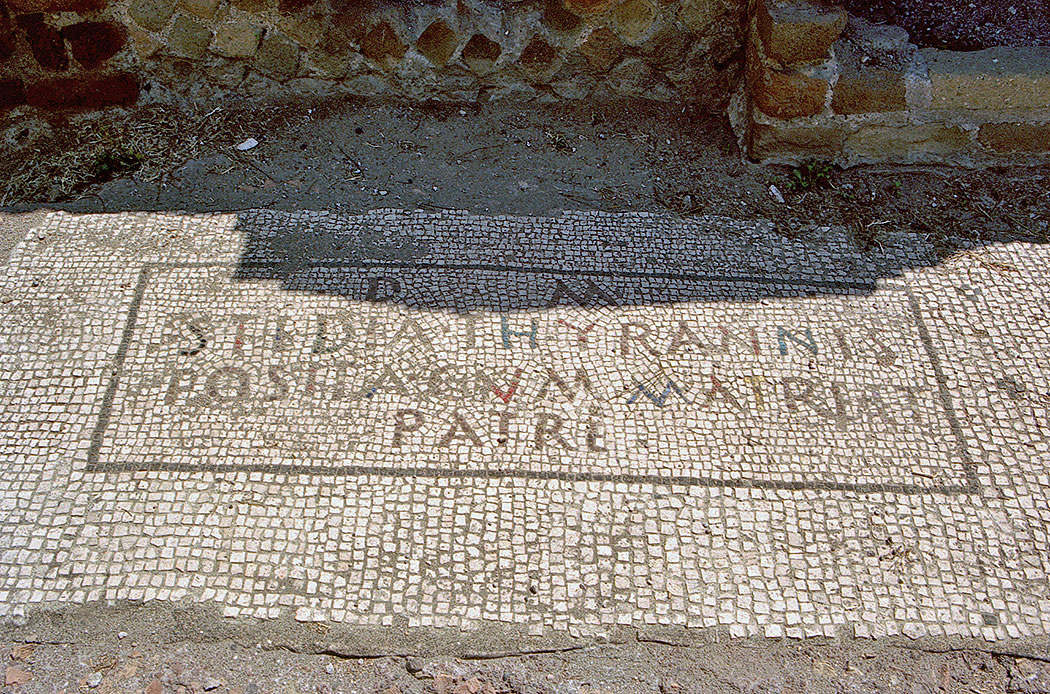 D(is) M(anibus)
D(is) M(anibus)
STEDIA THYRANNIS
POSITA CVM MATRE ET
PATRE
Stedia Thyrannis is buried here with her mother and father.
Inside the enclosure a marble funerary altar has been found. The pillar measures 83 x 44 cms and has two inscriptions. On the upper part:
D(is) M(anibus)
CLAVDIAE HAMMONIL
IAE
On the lower part:
D(is) M(anibus)
TI(berio) CLAVDIO
SEVERO
CLAVDIVS SEVERIANVS
ET CLAVDIA
HAMMONILIA
PATRI PIENTISSIMO
Claudius Severianus and Claudia Hammonilia (erected this altar) for their most pious father, Tiberius Claudius Severus2.
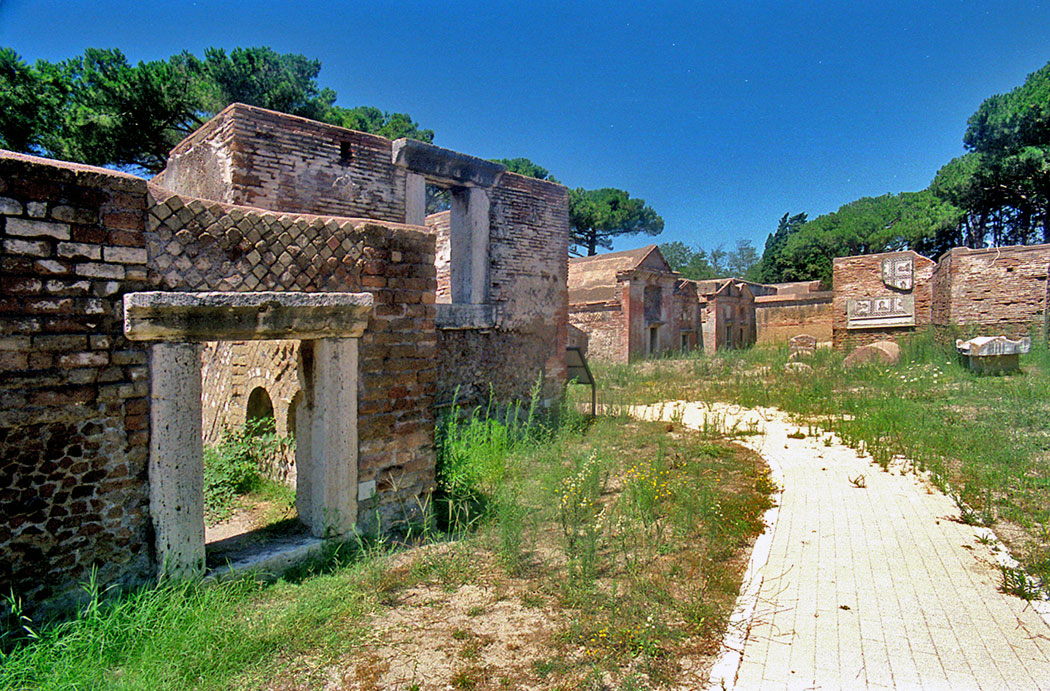
- Sources
- Russel Meigs - Roman Ostia, At the Clarendon Press 1973
- Guido Calza - Necropoli nell'Isola Sacra'(1940)
- Dr. Jan Theo Bakker.
- Hilding Thylander - Inscriptions du port d'Ostie (Lund C W K Gleerup 1952).
- Ida Baldassarre, Irene Bragantini, Chiara Morselli and Franc Taglietti - Necropoli di Porto, Isola Sacra (Roma 1996).
- Notes
- 1: Escavations in the 70ths have brought to light a threshold covered with black and white mosaic. Thus, the polychromic mosaic dates from a later period or doesn’t belong to this tomb at all. - I. Baldassarre, I. Bragantini, Ch. Morselli en F. Taglietti: Necropoli di Porto (1996)
- 2:After the death of his sister, her brother added her name on the cornice.The brother does not have an own, second name, but the conjugation of his father's name (-inus, -anus). In this way the name of his sister comes from Hammonius (Ammonius). This is "child of Amon", an Egyptian name.- Thylander: Inscriptions du port d'Ostie.
Isola Sacra Index (I)

Sezione speciale dedicata al cimitero romano di Portus (in inglese)....
Leggi tutto...Leptiminus (Inglese)
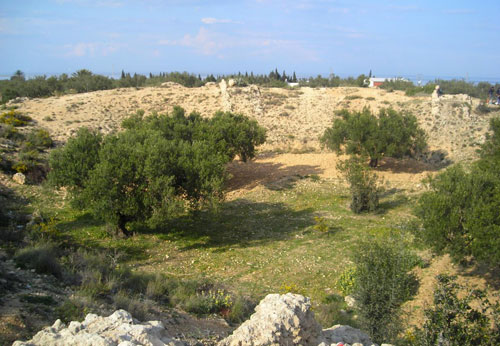
At the site of present-day Lamta on Tunisia's east coast, there was already a port city named Leptis Minor ....
Leggi tutto...Diritto romano del commercio marittimo (inglese)

Roman law is the finest monument that Rome bequeathed to Western Europe....
Leggi tutto...Sullecthum (Salakta) Inglese

In the Sahel, in the Tunisian province of Madhia, we find by the sea the small town of Salakta....
Leggi tutto...Colonia Julia ad Turrem Libisonis (Inglese)

.....probably founded by Julius Ceasar around 46 BC, was located in the north-west of Sardinia.
Leggi tutto...
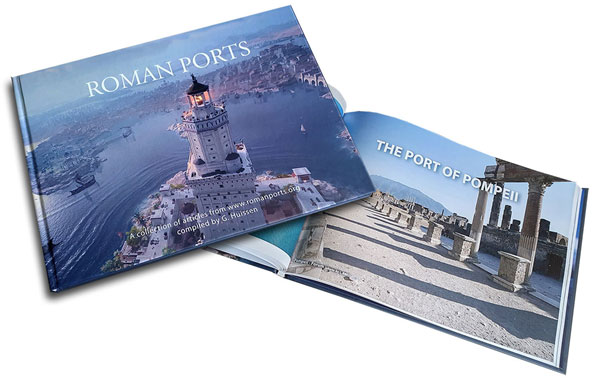
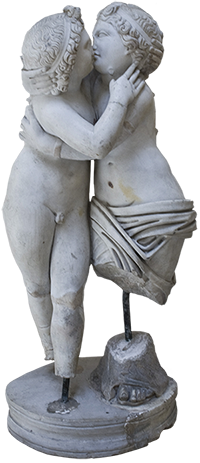 We are committed to providing versions of our articles and interviews in several languages, but our first language is English.
We are committed to providing versions of our articles and interviews in several languages, but our first language is English.